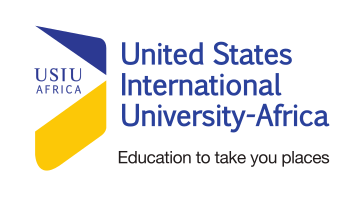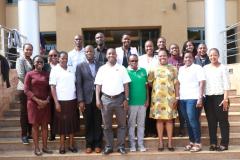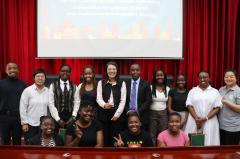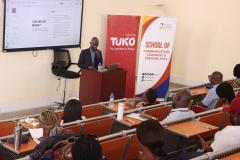History of USIU-Africa
In 1927 Leland Ghent Stanford chartered a private graduate institution called Balboa Law College in San Diego (USA), which later changed its name toBalboa University in 1945. In 1952, Balboa University again changed its name to California Western University, and a year later Dr. William C. Rust became the university’s president.
Dr. Rust had a vision of international education that would see students and faculty share and embrace knowledge around the world. In 1968, he relocated the university’s undergraduate and graduate programs to Scripps Ranch in northeast San Diego, then formally changed the university’s name to United States International University (USIU).
Soon after, began his search for an African campus, travelling to Nigeria, Ghana and Kenya, before finally settling on Nairobi. The United States International University – Africa was registered under the Companies Act (Cap 486) on 18th September, 1969. In 1970, he signed a Memorandum of Understanding with the Government of Kenya that allowed him to offer business programs and any other degree programs not being offered by the public universities.
Rust’s journey was not an easy one. There were many challenges to his vision including convincing the Kenyan government that an American education was just as good as a British one. He also had to convince the U.S. accrediting body (Western Association of Schools and Colleges – WASC) of the viability of an international multi-campus system. He went on to establish campuses in Mexico City, London and Tokyo.
In 1977, the university began to offer accredited full degree programs in Business Administration, Psychology and International Relations. Unlike earlier graduating classes that completed their degree requirements in San Diego, the first students to graduate from the Nairobi campus did so in 1979.
Dr. Dee Aker’s term as Executive Director began in 1981 and lasted for three years, when Dr. Lillian K. Beam succeeded her. The ten-year term of Dr. Beam coincided with major shifts in the regulation of higher education in Kenya. To comply with the new quality assurance standards enshrined in the Universities Act of 1986 and the rules and regulations that followed in 1989, Dr. Beam purchased 20 acres of property in Kasarani, Nairobi where the campus moved to in 1991.
The temporary buildings built then to accommodate current students, were completed in time to accommodate a sudden influx of students from Kenyan public universities, desperately seeking to complete their college education, following a prolonged faculty labor dispute in Kenyan public universities. The new students, as well as many faculty members from public universities stayed on, forming the foundation for USIU-Africa’s fledging new campus.
In 1994, then USIU President Dr. Garry B. Hays, offered Dr. Freida A. Brown, then USIU Coordinator of international campuses, a chance to take over from the retiring Dr. Beam as Executive Director. She moved to Nairobi to find a campus with mounting debts, almost no fulltime faculty and no Charter.
Dr. Brown solved the debt crisis through prudential financial management, and did it so well that in four years, the university’s finances has recovered enough to purchase an additional 60 acres, thereby meeting the minimum land requirement for accreditation by the Commission for Higher Education. A year later, the university was granted its Charter by then Kenyan President H.E. President Daniel T. Arap Moi, at a ceremony that also featured the inauguration of Dr. Brown as USIU-Africa’s first Vice Chancellor.
By the turn of the century, USIU-Africa’s School of Business Administration and School of Arts and Sciences were offering 11 programs at both undergraduate and graduate level, all of which were dually accredited in Kenya and the United States.
The university has also completed construction of a 450-seat auditorium, a recreation center and a second campus housing block.
In 2001, USIU merged with the California School of Professional Psychology (CSPP) forming the Alliant International University. USIU-Africa successfully sought to separate itself from the new entity, becoming an independent institution in 2005, and receiving its own accreditation as United States International University, from the Western Association of Schools and Colleges (WASC) in 2008.
In 2004, the construction of a building to house School of Business Administration was completed and following an endowment of US$1 million by industrialist Manu Chandaria, the School was renamed Chandaria School of Business. Three years later, the landmark ultra-modern Library and Information Center was completed to a tune of KES 550 million occupying 10000 square meters, and partly funded through the US Agency for International Development (USAID)’s ASHA program. The former library building was refurbished in 2009 to house the new School of Science and Technology, and renamed the Lillian K. Beam Building in honor of the visionary former Executive Director.
In 2014, the university rebranded, reverting to its former United States International University – Africa. A year later, construction of the new home for the School of Science and Technology, and the new School of Pharmacy and Health Sciences was completed. Kenyan Deputy President H.E. William S. Ruto opened the Science Center in March 2015.
In December 2014, the Board of Trustees announced the impending retirement of long-serving Vice Chancellor Prof. Freida Brown. The search for her successor culminated in the installation of Prof. Paul T. Zeleza as USIU-Africa’s second Vice Chancellor on Thursday, April 7, 2016.
To keep pace with the student population that now totals over 6500, the decision was made to begin construction of a new Student Center to consolidate and house student support services as well as provide expanded recreational facilities, and student government offices. The Freida Brown Student Center was officially opened on Thursday, November 10, 2016 at a ceremony presided over by former Vice Chancellor Prof. Freida Brown and Mr. Ronald Osumba (Chairman of the Board, Youth Enterprise Development Fund).
Over 70 nationalities are represented among the diverse student population undertaking 30 undergraduate, graduate and doctoral programs at USIU-Africa.





